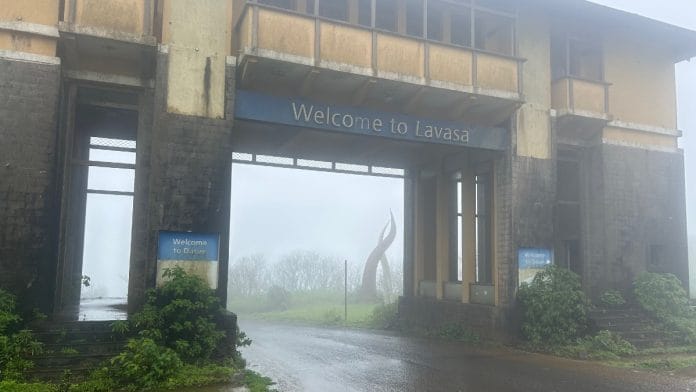Dasve: More than 15 years ago, Minoo Wadia, a retired Indian Air Force officer, bought himself a dream: the prospect of a quiet life, a second innings of sorts. He then decided to put his money down on a villa on India’s first private hill station—Lavasa.
Wadia put his head and heart into designing the villa. A ramp at the entryway for his mother’s ease, and a spacious verandah outside his bedroom where he hoped to spend the rest of his days, taking in the breathtaking view of the Sahyadri range.
Instead, Wadia, now 80 and the head of Apex Association Of Lavasa Property Owners, is doing the rounds of National Company Law Tribunal (NCLT) courtrooms, keeping in touch with Lavasa’s creditors, the tribunal-appointed resolution professional, and other homeowners.
That said, the part of Western Ghats where Lavasa sits is still every bit as beautiful as brochures advertised. There’s a nip in the air, gurgling waterfalls randomly spouting through crevices of rocks, and a stillness interrupted only by the chirping of birds and rustle of vividly green trees.
But while nature kept its promise, the Lavasa Corporation could not. It painted the picture of a luxurious town along the lines of Italy’s Portofino, with its charming harbour and top-of-the-range hotels, restaurants, schools, hospitals, and a lifestyle club unlike any seen before. That dream of a quiet life in the hills is now up in smoke.
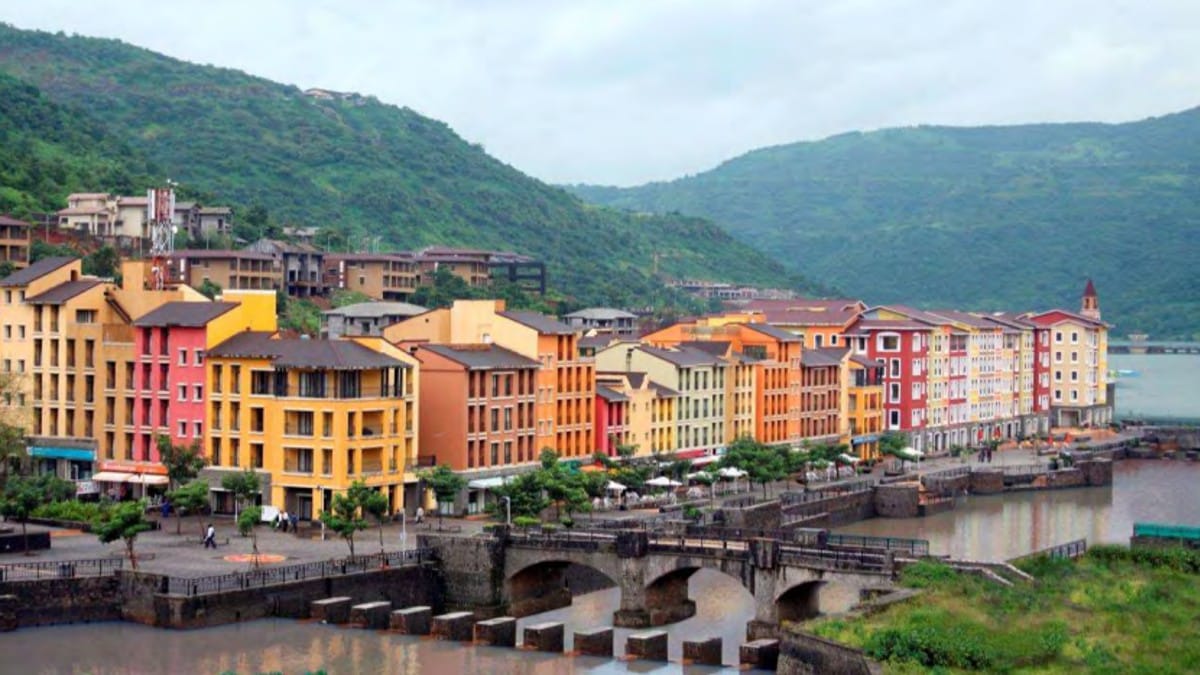
Lavasa Corp has been embroiled in bankruptcy proceedings since 2018 and the strain on its finances is visibly evident across Lavasa city.
Former Union minister Arun Shourie, who owns a villa in Lavasa, said, “Lavasa is a matter of personal grievance for us. But, it is also an example of the rot in our bankruptcy process.” He added, “The tribunals were supposed to be substitutes for courts. They were supposed to be expeditious. But, Lavasa has taken more than five years.”
In June 2023, there was a glimmer of hope with the NCLT approving a Rs 1,814 crore resolution plan for Lavasa Corp proposed by Mumbai-based Darwin Platform Infrastructure Ltd (DPIL). Its founder Ajay Harinath Singh came as Lavasa’s knight in shining armour, claiming to be from the lineage of none other than the Hindu deity Ram. Singh’s turnaround plan for Lavasa is said to have included a statue of Prime Minister Narendra Modi which was touted as the tallest in the world.
However, there was no progress for more than 14 months and home owners as well as creditors began to question DPIL’s plans, legitimacy as well as its fiscal ability to actually pull off its plan.
Eventually, the Mumbai bench of NCLT on 6 September scrapped DPIL’s resolution plan and ordered fresh insolvency proceedings.
For Lavasa and its residents, procedurally this marked a return to square one. But, some homeowners believe it has actually opened the doors to once again make attempts at drawing strong, credible bidders instead of working with a company that had allegedly fudged its financial records.
A group of homeowners had filed an appeal before the NCLT alleging DPIL “fudged figures, deliberately misrepresented facts and spruced up its profile” in the resolution plan. They also alleged “conspicuous and serious due diligence deficiencies” in the process.

On its part, DPIL pointed to a bunch of regulatory issues and opposition from a section of the creditors and homebuyers as reasons for the delay in putting its resolution plan in action. But, the NCLT in its order said DPIL was “blatantly and consciously responsible for the failure of the implementation of the approved resolution plan”.
Meanwhile, Lavasa, which was supposed to be a slice of European life nestled among the Indian Sahyadris, now resembles a ghost town with multiple partially constructed or abandoned structures. Roads in parts of the city are deplorable, colourful apartments and villas appear worn out and blackened with water seepage; to add to that, local businesses are finding it difficult to survive in what was once a thriving tourist spot.
Maintenance staff too are struggling to make ends meet, given irregular salary payments. “We get our salaries once every five or six months. Over the years a lot of the staff was asked to leave. Some who were younger left on their own looking for better work. I am too old to find something else now, so I have stuck around,” said Eknath More, a staffer in his 50s.
When he spoke to ThePrint, More was sitting at a deserted ‘Tourist Information Centre’ just off the Lavasa promenade.
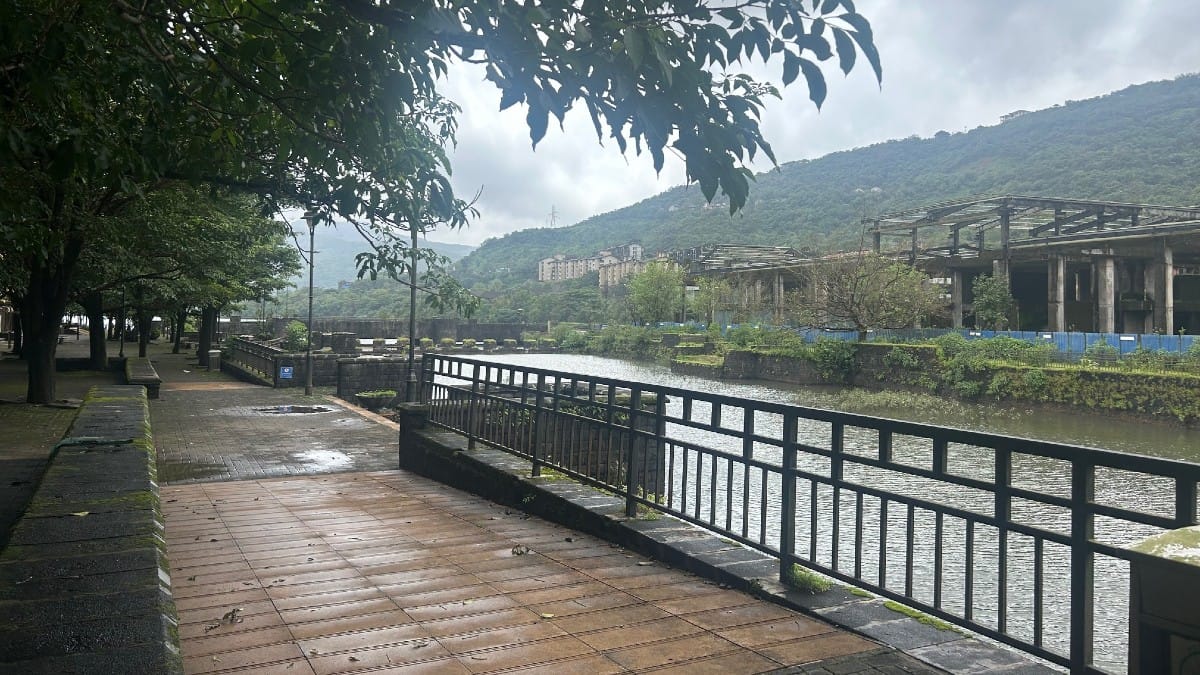
According to a submission by the NCLT-appointed resolution professional before the Union Ministry of Environment, Forest & Climate Change for the purpose of renewal of Lavasa’s environment clearance, Lavasa Corp has so far constructed 612 buildings and another 196 are in different stages of construction.
Wadia, on the other hand, estimated that about a thousand property owners have got possession, and another 500-odd who have purchased homes that were never completed. Another 400-odd houses are ready, but have not been sold, he added.
ThePrint reached resolution professional Shailesh Verma for comment via phone calls and text messages but had not received a response by the time of publication. This report will be updated if and when a response is received.
A spokesperson of the Hindustan Construction Company (HCC), which had a majority stake in Lavasa Corp, said, “Lavasa has ceased to be part of the HCC Group. In deference to the IBC process and to the resolution professional responsible, we prefer not to comment.”
A private hill station forever controversial
Lavasa, dream project of HCC’s Ajit Gulabchand and brainchild of Nationalist Congress Party (NCP) founder Sharad Pawar, has been controversial from the get go.
As More looks out of the vacant ‘Tourist Information Centre’ just off the Lavasa promenade, he points to the land right in front of it. There is the white edifice—the Lavasa Townhall—and a few steps around it that go down to the Warasgaon river promenade.
“This entire land belonged to my family,” said More, who hails from Dasve village, home to most of Lavasa city built so far in the first phase. He travels to the city each day from Pune, about two hours away, with a few others.
“Irrespective of what happens to Lavasa, there’s one good thing that has come out of this project. Earlier, there was no road connectivity to Dasve. The village was not even fully electrified. The concept of Lavasa at least brought these basics to our village,” he said.
While More and others from Dasve village are now happy about the basic infrastructure they gained access to because of Lavasa, acquiring land for the private hill station was far from easy. A few farmers even alleged that the embattled Lavasa Corp, in which HCC had a majority stake, acquired their lands using fraudulent means.
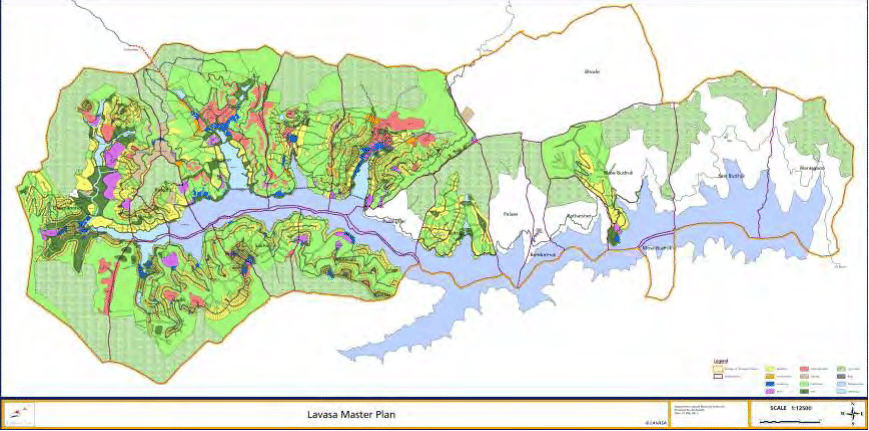
The Maharashtra government in 1997 designated 20 villages in Mulshi and Velhe talukas of Pune district for hill station development.
Four years later, in 2001, the state government’s urban development department gave its sanction for a hill station project here to Lake City Corporation Pvt Ltd, which was previously known as Pearly Blue Lake Resorts Pvt Ltd and named Lavasa Corp with effect from June 2004.
Lavasa Corp began acquiring land here in 2002 followed by real estate development and sales in 2007. By September 2010, it had acquired 9,460 acres.
The Lavasa master plan envisaged a private city with a walk-to-work culture and non-polluting industries across sectors such as R&D, animation, biotechnology, fashion and so on, spread across five phases.
It was to have the world’s best hospitality, medical and educational brands as well as a 65-acre edutainment park, an amusement park, an India-centric theme park, water sports and so on. Lavasa Corp estimated that the township, once complete, would accommodate about three lakh permanent residents, other than the floating tourist crowd.
A former minister for disinvestment at the Centre, Shourie said, “What I have noticed among Indian entrepreneurs is that when the going is good they make big plans, borrow left, right and centre, and get divorced from the ground reality. The banks also do not look carefully.”
He quoted former US Federal Reserve chairman Alan Greenspan to describe this phenomenon as “Irrational exuberance,” which, he said, is what was seen in Lavasa’s case too.
Lavasa’s plans came to a grinding halt in November 2010 just as Lavasa Corp was preparing to go for an Initial Public Offering (IPO). The then Jairam Ramesh-led Union Ministry of Environment & Forests slapped a stop-work order on Lavasa alleging violations of environmental norms.
And in 2012, the Comptroller and Auditor General (CAG) flogged the Maharashtra government, alleging lack of transparency in facilitating a project like Lavasa in an already ecologically sensitive area. It said the project was driven by private, not public interest.
“Till 2010 we could see 15,000 to 18,000 labourers working all over the city continuously. In one shot everything stopped,” Wadia said.
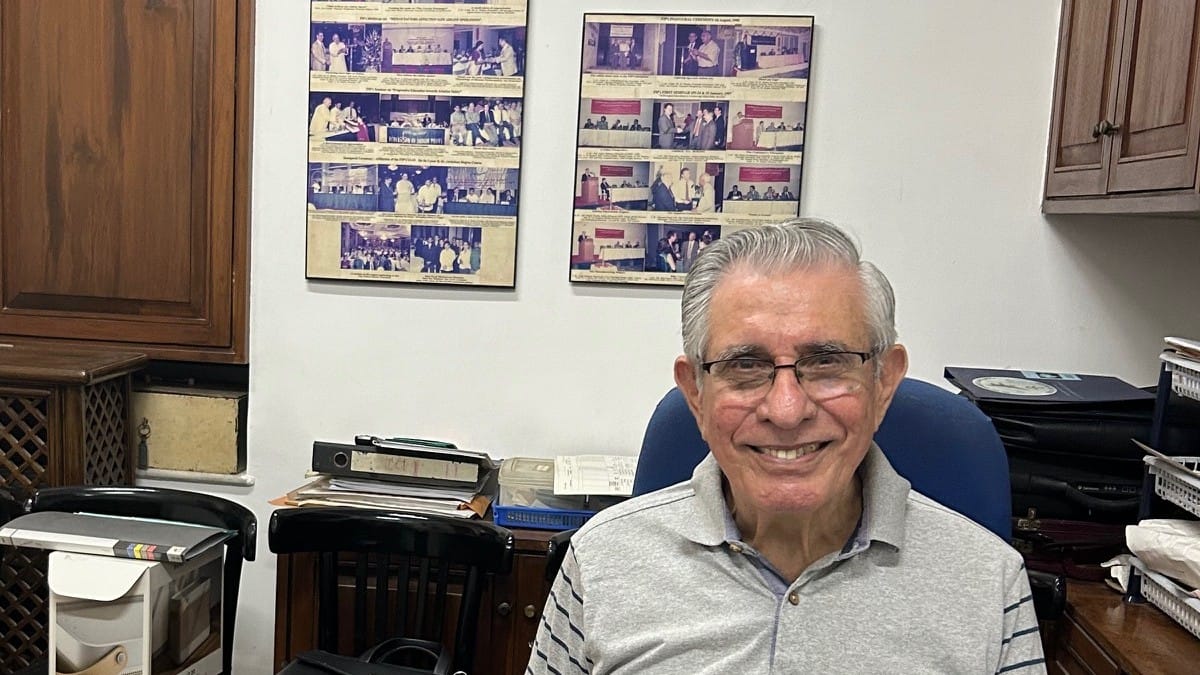
About four months after the stop-work order, in March 2011, Lavasa Corp obtained conditional approval to complete the project, and it did begin construction anew. Wadia himself got possession of his villa in 2014. But, the shadow of allegations had started weighing on the project.
By fiscal 2014, Lavasa Corp’s non-current and current liabilities had ballooned to Rs 4,104.48 crore from Rs 2,291 crore in fiscal 2010. The company also posted its fourth consecutive loss of Rs 186 crore that fiscal.
It filed for an IPO twice after that, once in 2014 and again in 2016, only to then shelve its plans.
The part of Lavasa already developed by that time was being maintained well and had turned into a thriving tourist hotspot, property owners and residents said.
Its downfall, residents said, really began after the NCLT Mumbai Bench admitted an insolvency petition against Lavasa Corp by a creditor, Raj Infrastructure Development (India) Pvt Ltd, in August 2018 and the company was brought under a resolution professional.
“When I moved here in 2015, the whole place was awesome. It’s unfortunate to see how it has deteriorated now,” said Uma Damle, who moved from Mumbai to Aashiana, a senior living community in Lavasa.
Damle was reading a newspaper at about 3 pm, sitting in the airy, plush common area of Aashiyana. The senior living community is a small well-maintained haven within the otherwise deteriorating Lavasa. The paint on the walls is perfect and the swimming pool, library and other facilities are well kept. It is home to about 250 families, residents said.
Of these, about 80-90 live in Lavasa permanently.
“We have kept Aashiyana well maintained, but ultimately what happens outside does affect the community inside too,” Damle said, referring to poor quality of roads, broken streetlights and drainage issues, among others.
Lavasa: The political orphan
Sometime in the late 1990s, Sharad Pawar, founder of the NCP, was visiting the United Kingdom when he saw the picturesque Lake District and how it had become a significant stimulus for tourism. He resolved to carve out something similar in Maharashtra’s Sahyadris and even sent state government officials to Lake District for a study tour.
Pawar’s autobiography, Lok Maze Sangati (People, my companions), has a dedicated chapter on how Lavasa was his brainchild. The location was ideal, it says, as the 18 villages selected for the project were on the downwards slope of the Sahyadris making it difficult to cultivate land for farming.
The book adds, as they started working on the plans, they soon realised this was a challenge beyond the government’s capability, and that’s how Ajit Gulabchand, Pawar’s old friend, came into the picture. Pawar’s involvement, his close ties with Gulabchand and the fact that his daughter Supriya Sule and son-in-law Sadanand were shareholders in Lavasa Corp for a brief period, is how Lavasa ran into a raging political controversy.
In August 2022, the Bombay High Court dismissed a petition by Nanasaheb Jadhav, a lawyer, and refused to interfere with permissions granted to Lavasa. The division bench, however, said that there seemed to be ‘exertion of influence and clout’ by Pawar and his daughter.
Today, Lavasa is not just a far cry from the UK’s Lake District, but also a political orphan.
“There is a huge difference between what we were promised and what we got. I have written to the Prime Minister at least 15 times about it. I would get a response that the letter has been forwarded to the Maharashtra chief minister, and then radio silence,” said 75-year-old Suresh Goswami, a villa owner in Aashiyana who has been living in Lavasa since 2010.
Other than his villa, Goswami had booked two studio apartments of 550 square feet each in Lavasa, outside Aashiyana, as an investment. He often drives past the partially built, decaying building, wondering if he will ever get a return on his investment or at least all of his money back.
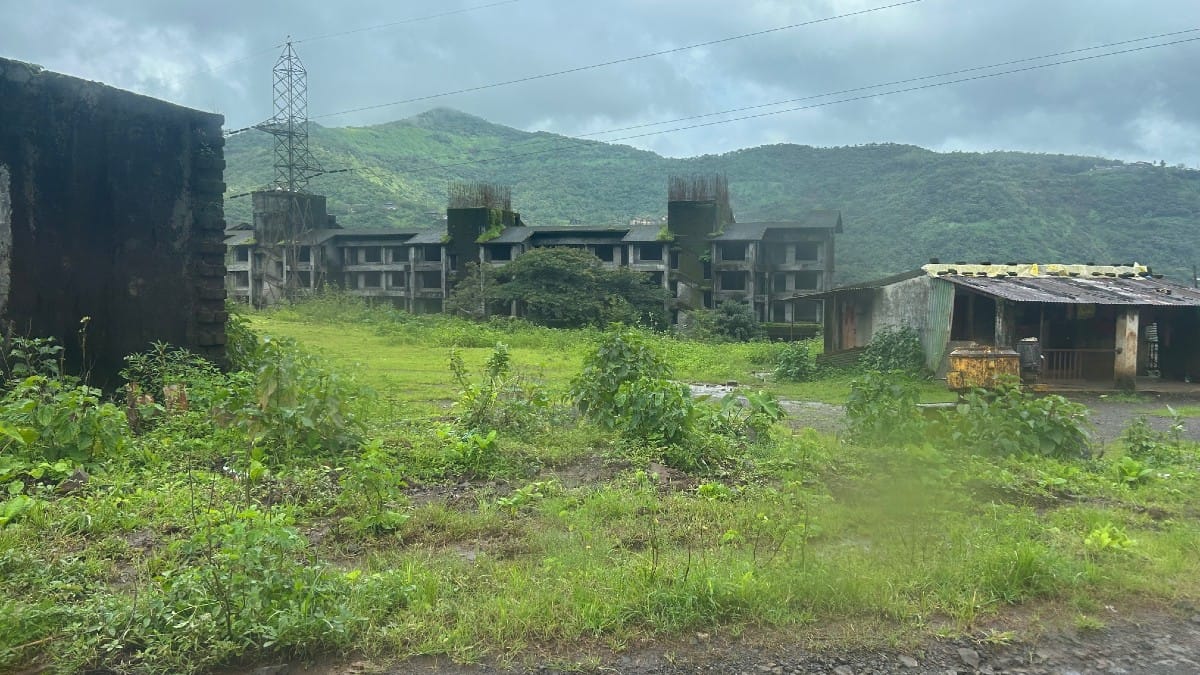
He first approached the Maharashtra Real Estate Regulatory Authority (RERA) and was fortunate enough to get 50 percent of his investment back from Lavasa Corp. In May 2021, he wrote a complaint to the Mumbai Police’s Economic Offences Wing (EOW), and is yet to hear back.
In December that year, Goswami felt Lavasa was finally turning a corner.
A Committee of Creditors appointed by NCLT accepted DPIL’s resolution plan with 96.41 percent votes after a bidding process. Teams from DPIL started visiting Lavasa often and Goswami, among the handful of residents actively pushing for a solution to the stalemate, made it a point to establish a direct conversation with DPIL’s founder-chairman Ajay Harinath Singh.
Goswami said he would keep texting words of encouragement and anticipation to Singh, who would respond with one-word pleasantries.
At one point in 2023, when Goswami questioned Singh about the delay in implementing DPIL’s resolution plan, the latter blamed it on a few unsupportive property owners. By November 2023, Goswami’s chat window with Singh had turned into a one-way communication where Goswami would ask questions that would go unseen and unanswered.
In a 12-page statement to ThePrint explaining the insolvency process till 2018, Darwin Infrastructure Pvt Ltd emphasised how it was the only company that could come up with an acceptable resolution plan.
It largely blamed the failure to implement its resolution plan on “a few corrupted homebuyers” and “political pressure on banks,” saying the Union Bank of India, one of the creditors that approved of the resolution plan in the past, did not allow the company to implement it.
7 meetings & ‘fudged financials’
DPIL’s resolution plan for Lavasa Corp envisaged an investment of Rs 1,814 crore. Of this, Rs 100 crore was to be paid upfront and another Rs 50 crore within nine months. The influx was to be used for some mandatory payouts under the insolvency code, payments to certain creditors and to meet Lavasa’s working capital and expenditure needs.
The NCLT appointed a monitoring committee to supervise implementation of the resolution plan. But, records maintained by the tribunal show the committee met seven times without making any headway.
According to a submission by the Union Bank of India to the NCLT, by the third meeting of the monitoring committee, which was held on 13 October, 2023, lenders made clear to DPIL that they will invoke the performance bank guarantee of Rs 25 crore if the company fails to deposit the Rs 100 crore by the stipulated date of 23 October.
By the sixth meeting on 19 January this year, DPIL had still not made the upfront payment. In this meeting, the committee also discussed various operational issues that cropped up over Lavasa’s functioning: inadequate security, and expiry of contracts of sewage treatment and other vendors; mainly due to the lack of funds. The committee calculated that the amount required for Lavasa’s maintenance from the time the resolution plan was approved till the end of 2023 was an estimated Rs 5.29 crore.
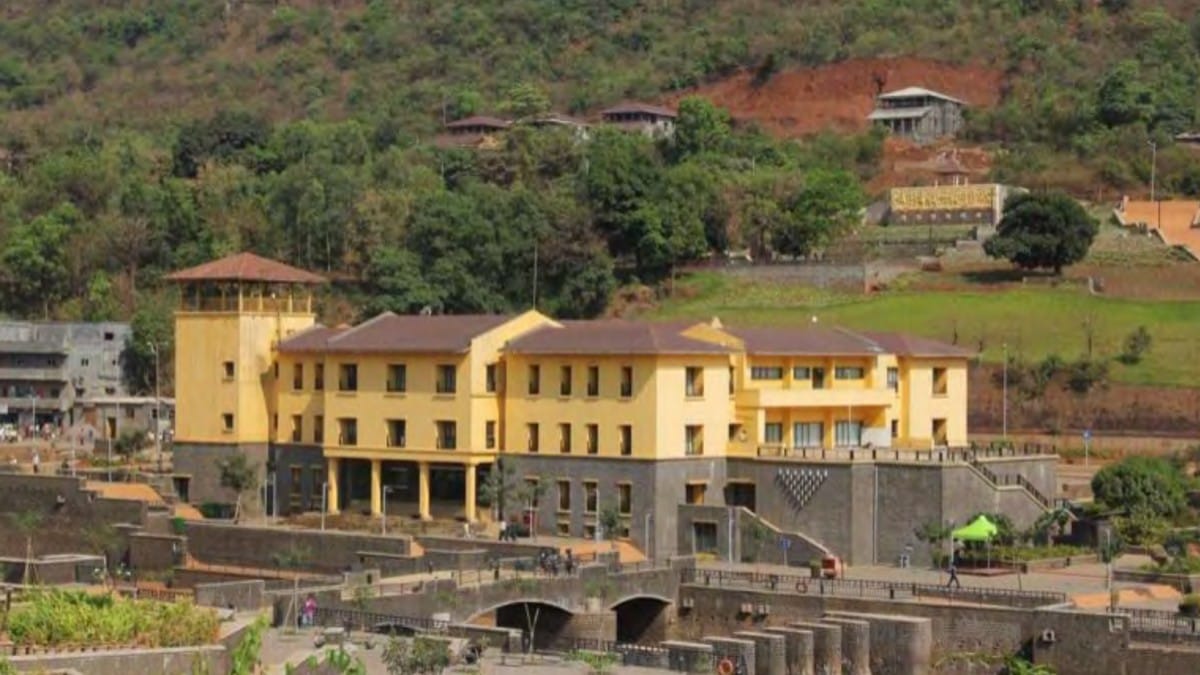
The seventh and final meeting of the monitoring committee was held on 19 March, 2024, when the same matters were discussed and DPIL was asked to foot the bill for working expenses of the monitoring committee.
According to DPIL’s submission to the NCLT, there were certain stumbling blocks in implementing the resolution plan.
The foremost being that, by this time, the status of Lavasa Corp had slipped to ‘active, non compliant’ in the records of the Ministry of Corporate Affairs. In order to take any steps towards implementing the resolution plan such as fresh issuance of share capital or reorganisation of share capital, the company’s status had to be ‘active, compliant’. For this, the company had to file its latest audited financial statements and other corporate compliances, for which it first needed a board of directors.
In the very second meeting of the committee, members had accepted certain names as prospects for the board of directors, but differences surfaced over the terms and quotations for engaging a consulting company secretary. The issue remains unresolved to this day.
And in September 2023, Union Bank of India opposed DPIL’s resolution plan, calling for its recall, saying it is a nationalised bank made to suffer a haircut of nearly 80 percent. The bank said this was “grossly inequitable and unpalatable considering the fact that public money is involved”. The NCLAT dismissed the plea in January 2024.
After this, the State Bank of India, another secured creditor, filed an appeal against the resolution plan in the NCLAT, which too was dismissed in February 2024. Meanwhile, parties such as the Maharashtra State Electricity Distribution Co. Ltd, a section of the homebuyers, and lessees of flats and villas also filed petitions or initiated litigation.
NCLT records show a group of 503 property owners alleged before it that DPIL “fudged financial figures and misrepresented facts”.
Their submission was that, according to DPIL’s resolution plan, it consistently showed its ‘reserves and surplus’ between Rs 4,162 crore and Rs 4,167 crore over three years from 2018-19 to 2020-21. Figures for the corresponding period as uploaded with the Registrar of Companies were between Rs 5.37 crore, Rs 7.19 crore and Rs 10.76 crore for the three fiscals.
Shourie said the NCLT simply scrapped DPIL’s resolution plan without going into the merits of the homeowners’ petition, because if they had, they would have had to get into the lack of due diligence by creditors as well as the tribunal.
DPIL, on the other hand, contended that all of this created an atmosphere of uncertainty for it, where it was expected to pay off the very creditors who were opposing its resolution plan. “Darwin (was) always willing to implement the resolution plan and hence spent money in crores, only seeking support/cooperation from banks which it failed to get,” it said in its 12-page statement.
Fading sheen
On a cool September afternoon, Goswami was driving around Lavasa. He said he’d rather not go up the hill slope to where Wadia’s villa is. “The road is too treacherous.” Nevertheless, he drove up the hill to a spot where the road seemed equally precarious. On the right was a rubble of rocks and wet soil, and a villa askew, sans any foundation.
In July, heavy rains triggered a landslide in Lavasa that killed two men and uprooted two villas. The lopsided, incomplete villa was one of them.
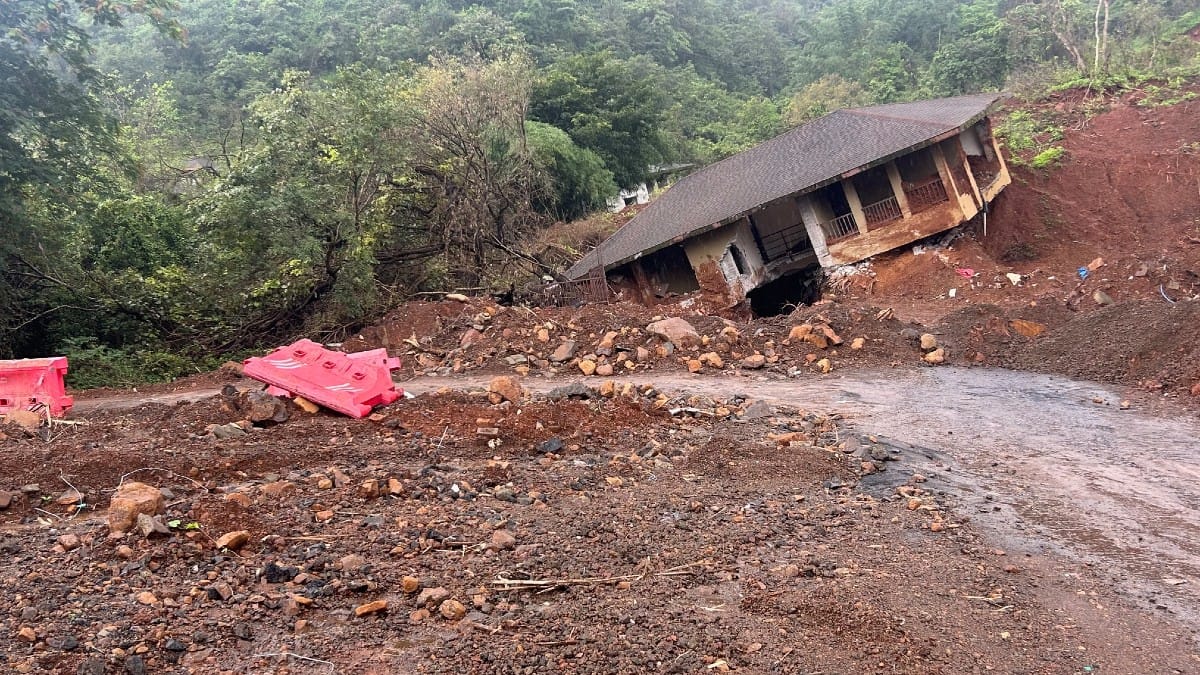
Wadia recalls rushing to Lavasa on the day of the landslide and returning home with blisters on his foot from raking through the muck for hours.
“Everyone knows Lavasa gets heavy rainfall. They have planned storm water drains for that. But, when I went there I saw for myself that instead of going through the storm water drains, the water was flowing on the road like a waterfall. The road was inundated. It was flowing to the other side and eroding the soil. The non-maintenance of Lavasa has worsened the impact of the rains. The drains should ideally have been declogged and de-silted before the monsoons,” the octogenarian told ThePrint.
Adding, “People say ‘nobody lives in Lavasa anyway’. Well, it’s not possible to live in Lavasa in its current state. It’s not maintained.”
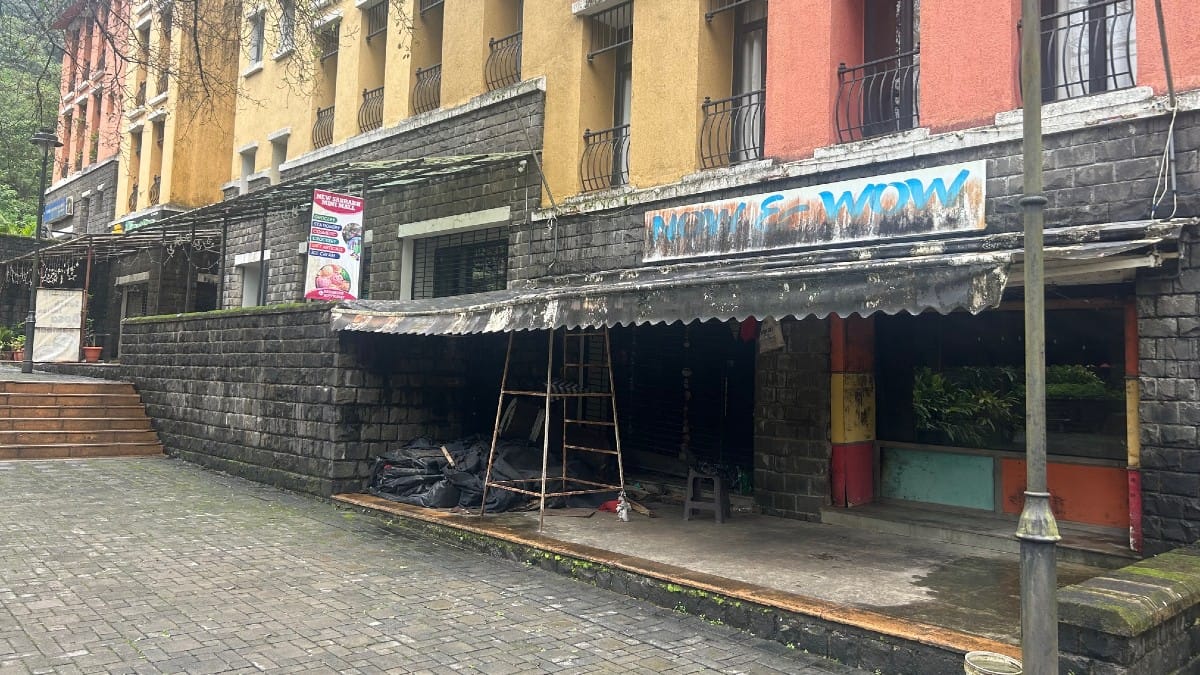
About 10-12 years ago, it seemed that independent India’s first private hill station was poised to take off despite controversies over alleged environmental violations and the project’s supposed political links.
Back then, Lavasa had a steady trickle of tourists, at least four hotels and another luxury hotel coming up, a recreation club for residents—that later shut down abruptly—besides water sports and restaurants along the promenade.
Among the restaurants, operated by the Waterfront Shaw hotel, was an American diner, a bakery, an Indian restaurant, a pizzeria, a London-style pub, a pan-Asian restaurant and a Lebanese one, besides another with fully vegetarian fare. One by one, they all shut down. Only the diner remains.
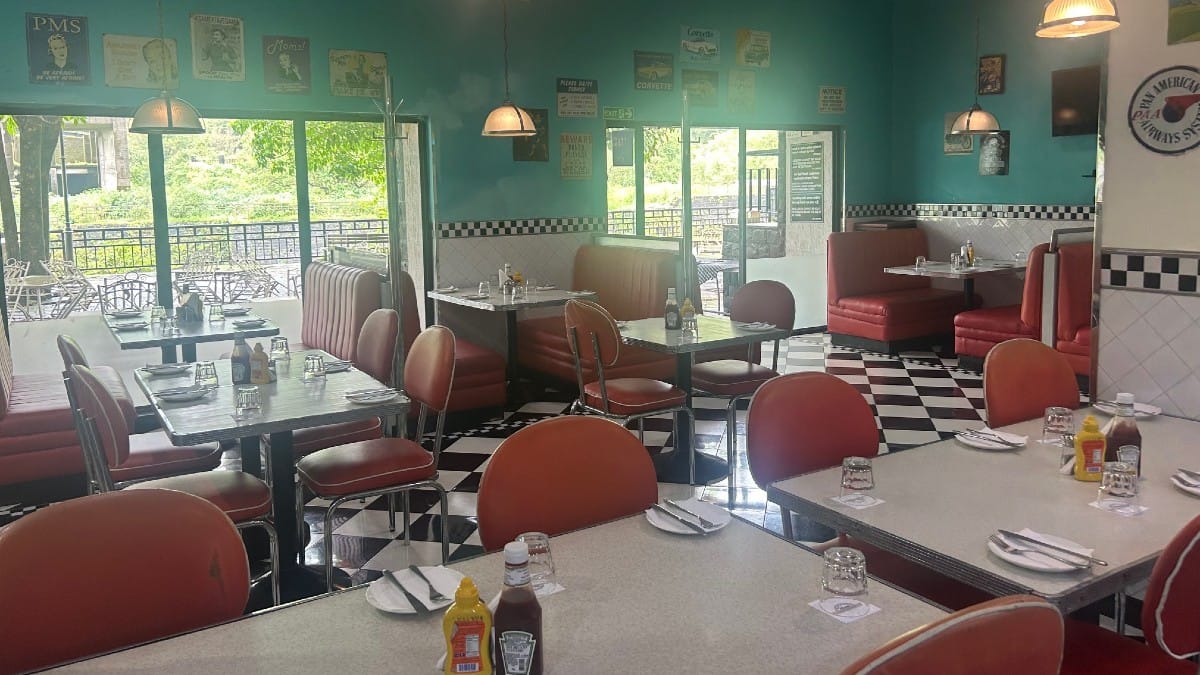
Though the Waterfront Shaw hotel on the promenade is open, it barely has any guests. There are two other smaller hotels and one hospital with a single doctor to tend to basic medical issues Lavasa’s residents may face.
Other than that, the only bustle in Lavasa today is that of students of Christ (Deemed to be University), which has a campus here.
“When all restaurants were operational, and the hotel was fully operational, we had 221 staff working in this hotel, of which 75 percent were only in F&B. Every outlet had its own service area, kitchen, pantry and washing up area. Today we are working with just 28 people,” said 64-year-old Mukesh Kumar, general manager of the Waterfront Shaw hotel.
He has been staying in Lavasa since 1 May, 2009, working in the same position, seeing the promenade gradually come alive with its lively food scene, film shoots, pre-wedding photography sessions, and a steady chatter of tourists and residents who were regular evening walkers.
Then, just as gradually, he saw all the elements that had once made Lavasa a waking, breathing destination, vanish before his eyes. “I have seen the peak, and I have seen the fall,” said Kumar as he sipped his mid-morning coffee in the nearly empty American diner which had seen better days.
(Edited by Amrtansh Arora)
Also Read: Mumbai needs 2.7L houses for all development, infra projects. How govt plans to build the stock



